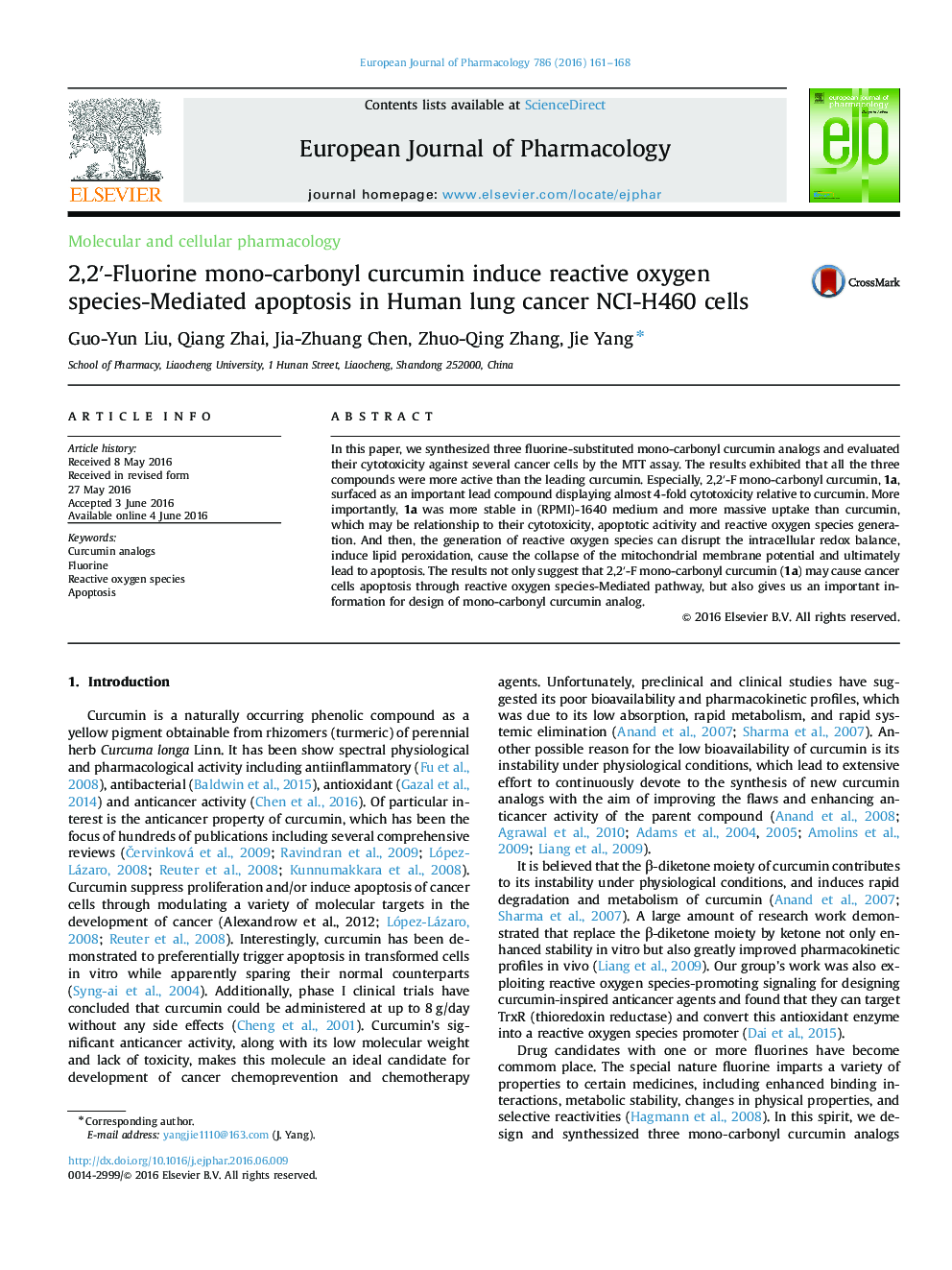| کد مقاله | کد نشریه | سال انتشار | مقاله انگلیسی | نسخه تمام متن |
|---|---|---|---|---|
| 2530987 | 1558894 | 2016 | 8 صفحه PDF | دانلود رایگان |

In this paper, we synthesized three fluorine-substituted mono-carbonyl curcumin analogs and evaluated their cytotoxicity against several cancer cells by the MTT assay. The results exhibited that all the three compounds were more active than the leading curcumin. Especially, 2,2′-F mono-carbonyl curcumin, 1a, surfaced as an important lead compound displaying almost 4-fold cytotoxicity relative to curcumin. More importantly, 1a was more stable in (RPMI)-1640 medium and more massive uptake than curcumin, which may be relationship to their cytotoxicity, apoptotic acitivity and reactive oxygen species generation. And then, the generation of reactive oxygen species can disrupt the intracellular redox balance, induce lipid peroxidation, cause the collapse of the mitochondrial membrane potential and ultimately lead to apoptosis. The results not only suggest that 2,2′-F mono-carbonyl curcumin (1a) may cause cancer cells apoptosis through reactive oxygen species-Mediated pathway, but also gives us an important information for design of mono-carbonyl curcumin analog.
This work demonstrates that 2,2′-fluorine mono-carbonyl curcumin causes apoptosis in NCI-H460 cells through reactive oxygen species-Mediated pathway. And the better anti-cancer activity may be due to its more stable and more massive uptake than curcumin.Figure optionsDownload high-quality image (188 K)Download as PowerPoint slide
Journal: European Journal of Pharmacology - Volume 786, 5 September 2016, Pages 161–168